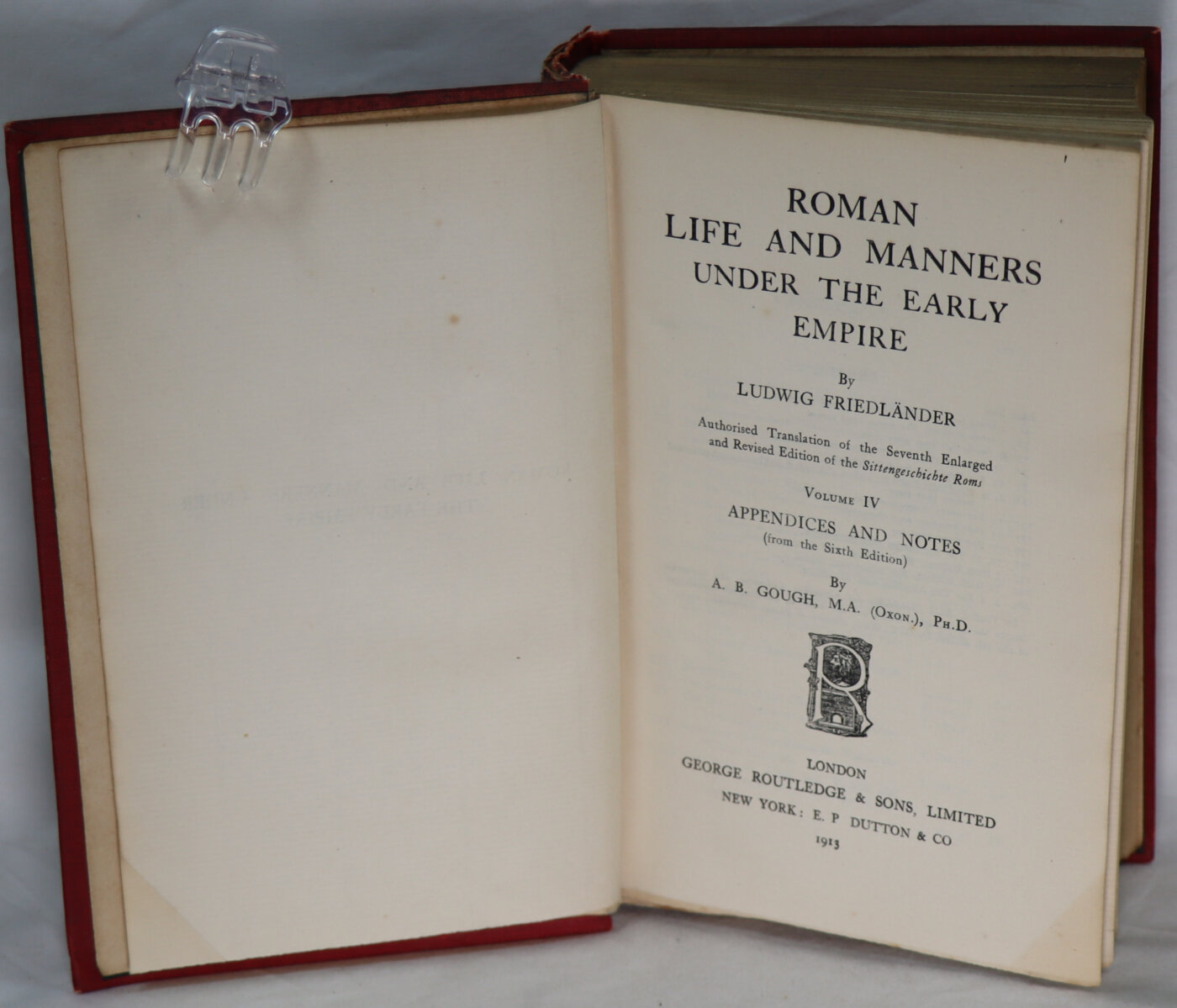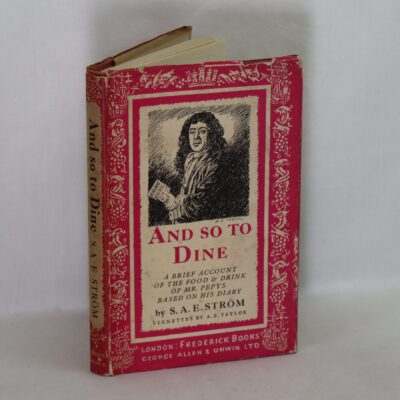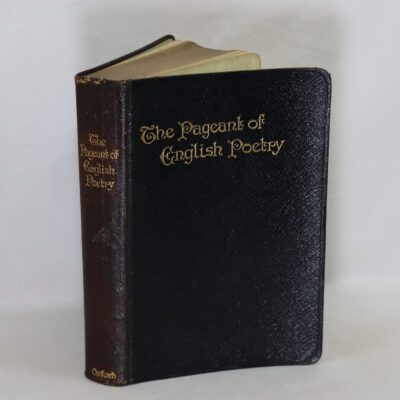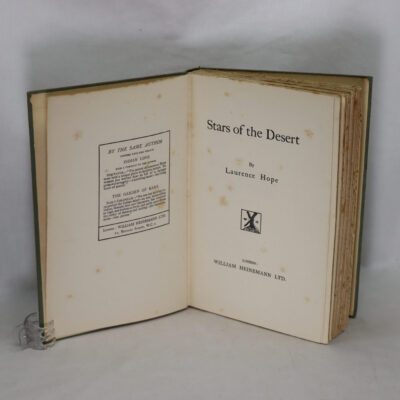Roman Life & Manners Under the Early Empire.
By A B Gough
Printed: 1913
Publisher: George Routledge & Sons. London
Edition: First edition
| Dimensions | 15 × 21 × 5 cm |
|---|---|
| Language |
Language: English
Size (cminches): 15 x 21 x 5
Condition: Very good (See explanation of ratings)
Item information
Description
Red cloth binding with gilt title.
- F.B.A. provides an in-depth photographic presentation of this item to stimulate your feeling and touch. More traditional book descriptions are immediately available.
- Note: This book carries the £5.00 discount to those that subscribe to the F.B.A. mailing list.
First Edition in original binding. Interior clean, tight, and sharp.
Every attempted delineation of the manners and customs of Imperial Rome must necessarily include a survey, as exhaustive as may be, of the spectacles, as the best measure of her grandeur, and as indicative in many ways of her moral and intellectual condition.
Originally, for the most part, religious celebrations, they became, even in the later Republic, the best means of purchasing popular favour, and, under the Empire, of keeping the populace contented. Augustus, the tale runs, once reproached Pylades the Pantomime for his jealousy of a rival, and Pylades replied: ‘It is to your advantage, Caesar, that the people concerns itself about us’. But these spectacles effected more even than the diversion of popular interest; their magnificence was a gauge of the popularity of the sovereign. The emperors, like Louis XIV, knew how admiration aids absolute autocracy; like Napoleon, that the imagination of the people must be excited: splendid festivals were one of their most indispensable and most constant devices. Even Caligula, according to Josephus, was honoured and beloved by the folly of the populace; the women and the youth did not desire his death; distributions of meat, the games and the gladiatorial combats had won their hearts, for such were the delights of the mob: the lavishing of these gifts was nominally due to consideration for the populace, though the gladiatorial combats were only intended to sate the monarch’s lust of blood.
Want to know more about this item?
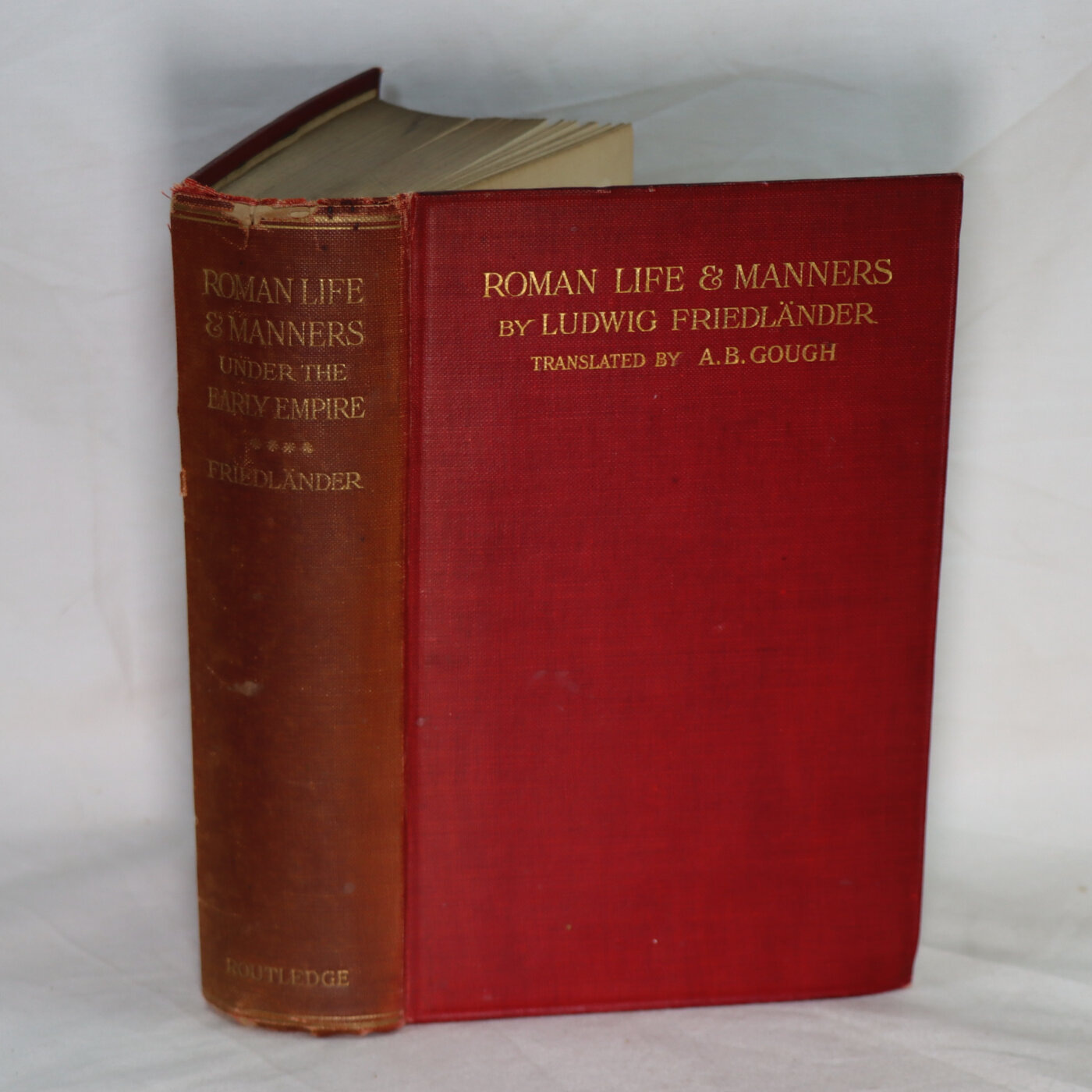
Related products
Share this Page with a friend

